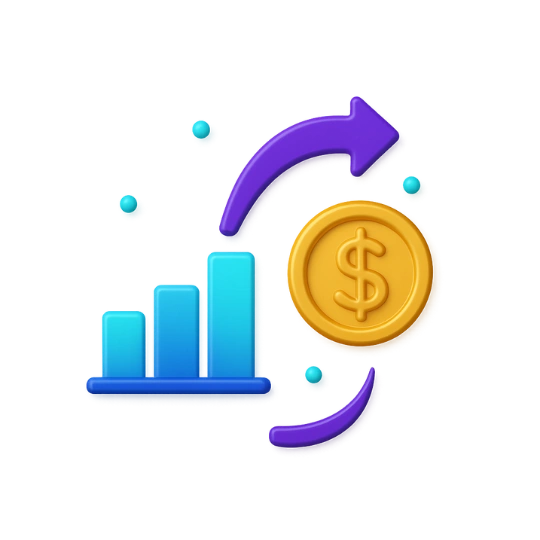Table of Content
Share This Article
- Published: Jul 7, 2023
- Last Updated: Sep 11, 2025
- 🔊 Listen
Quick Reads
- Assess your current and future business needs to determine if Xero’s features, automation, and reporting offer better value than MYOB.
- A structured plan including what data to move, tools to use, and a defined timeline helps avoid errors and delays.
- Choosing the right migration tool or working with outsourced experts ensures secure, seamless data transfer with minimal disruption.
- After importing data, tailor Xero’s settings like chart of accounts and tax rules to closely match your previous MYOB configuration.
- Reconcile accounts and test transactions in Xero to confirm accuracy and identify any inconsistencies early.
- Familiarise your team with Xero’s interface and migrate a few months of data first to reduce risk and build confidence.

Seamless Accounting with Xero
Automate accounting, boost collaboration, and improve visibility.
Shifting from MYOB to XERO is becoming increasingly common for Australian businesses seeking more flexibility and real-time financial visibility. This blog explores why many organisations are making the move, what benefits Xero brings over traditional systems, and the key factors to consider during migration.
Whether you are weighing up the change or simply curious about the differences, the aim is to provide clear, practical insights that help you understand the process and its impact on your business operations.
MYOB and Xero: A Quick Overview
MYOB is an accounting software developed in Australia. It offers a comprehensive suite of financial management tools tailored for small and medium-sized businesses. MYOB has a long-standing presence in the market and is known for its robust features and user-friendly interface.
Xero is a cloud-based accounting software originating from New Zealand. It has gained significant popularity globally for its intuitive design and extensive range of features. Small businesses and accountants particularly favour Xero because it emphasizes automation and real-time financial insights.
While MYOB has established itself as a dominant player in the Australian market, there are many other accounting software alternatives of MYOB, and Xero is one of the popular choices among business owners. So, if you are a business owner wanting to switch to Xero from MYOB accounting software, there are certain factors that you need to consider before making the switch.
What AU Businesses Must Consider Before Migrating from MYOB to Xero?
Before you convert MYOB to Xero, it’s essential to look beyond the migration itself, consider the cost analysis, the features and functionalities you will gain or lose, how reporting and analytics stack up, whether integrations with third-party apps are seamless, and how user-friendly the interface and experience will be for your team.
Here’s what you should keep in mind:
- Cost Analysis: Compare the pricing structures of MYOB and Xero. Consider the costs associated with software subscriptions, additional features, and potential setup fees. Assess whether the benefits and efficiency gains by Xero migration justify the additional investment.
- Features and Functionalities: Evaluate the features and functionality offered by both MYOB and Xero. When considering a potential Xero migration from MYOB, determine if the former offers the specific functionality and tools that meet your business requirements better than MYOB accounting software.
- Reporting and Analytics: Analyze the reporting and analytics capabilities of both systems. Consider the depth and customization options available in both MYOB and Xero for generating financial reports, tracking performance, and gaining insights into your business.
- Integration with Third-party Apps: If your business relies on other software or apps, assess Xero’s compatibility and integration capabilities. Check if it can seamlessly connect with your existing CRM, payment gateways, inventory management tools, or any other software crucial to your operations.
- User Interface and User Experience: Evaluate the user interface (UI) and user experience (UX) of both MYOB and Xero. Consider which software offers you and your team a more intuitive and user-friendly experience. A well-designed interface can significantly impact productivity and ease of use.
By considering the points mentioned above, you can make an informed decision about the MYOB to Xero migration and ensure a successful transition for your business.

6 Simple Steps to Migrate from MYOB to Xero
The MYOB to Xero conversion cycle becomes far easier when you follow a structured approach. Begin by planning ahead and selecting the right migration tool, then move on to exporting your data from MYOB and importing it into Xero.
Once your data is in place, set up your Xero settings carefully and finish by testing and reconciling to confirm accuracy. Here is a straightforward six-step guide to complete the MYOB to Xero conversion cycle.
- Plan ahead- Before you start the actual process of migrating your data from MYOB to Xero, it is essential to take some time to plan and prepare. This will ensure that everything goes smoothly and there are no surprises.You need to consider the following: What data do you need to migrate to XERO? How will you migrate your data? What is your timeline for migrating? What processes and procedures do you need in place for the migration?
- Choose your migration tool – Once you have planned and prepared for your MYOB to Xero migration, it is time to choose a migration tool. A few different options are available, so it is important to select one that will best suit your needs. Consider the factors such as cost, ease of use, and whether the tool can handle the size and complexity of your data. You can skip this step if you also opt for outsourced accounting and bookkeeping services providers to ensure a seamless data migration without stressing about the security of your data.
- Export data from MYOB- Once you are ready to begin, you will need to export all of your data from MYOB. This can typically be done through an export function within the software, or if you opt for accounting outsourcing service providers, then their team of experts can handle the same for you. This will help ensure a smooth and seamless migration of your sensitive data.
- Import data into Xero- Next, you will need to import your data into Xero. This is usually done by uploading a CSV file of your MYOB data.
- Set up Xero settings: Configure your Xero settings to align with your business needs. This includes setting up your chart of accounts, tax rates, payment terms, invoice templates, and any other specific settings required. Customise Xero to match your existing MYOB setup as closely as possible.
- Test and reconcile: After the Xero migration, thoroughly test the functionality of Xero to ensure that everything is working correctly. Perform reconciliations between MYOB and Xero during a trial period to validate the accuracy of financial balances and transactions. This will help you identify any discrepancies and ensure a smooth transition.
Remember, this is just a simplified overview of the MYOB to Xero migration process. Depending on the complexity of your data and business processes, you may need additional steps or professional assistance. Outsourced accounting services providers can ease this complex task for you.
What Are Some Helpful Tips for a Successful Transition from MYOB to Xero?
- Gather all the necessary information including employee and customer data, bank statements, invoices, etc. – that you will need to input into Xero.
- Familiarise yourself with how to use Xero and its interface and features. Take some time to explore the software and get comfortable with how it works before trying to transfer all your data over.
- Start small by transferring over only a few months’ worth of data at first. This way, if anything goes wrong, you will not have lost a ton of information.
- Have patience! Learning a new accounting software program can be daunting, but taking things slowly will help ensure a successful transition from MYOB to Xero.
Useful read: Benefits of Using MYOB Accounting Services
Power Your Business with Expert Xero Accounting Services
Migrating from MYOB to Xero can seem complex, but with the right guidance it becomes manageable. Expert service providers ensure a smooth transition by handling data migration, setup, and compliance.
With Xero accounting services, your business benefits from accurate records, real-time insights, and simplified financial management. By working with specialists who understand both the software and your business, you free up time to focus on growth while your finances remain precise and compliant.
Partnering with Whiz Consulting means gaining access to a dedicated team of expert Xero accountants who know how to maximise the platform’s capabilities to deliver end-to-end finance and accounting solutions. We ensure smooth collaboration across time zones, maintain the highest data security standards, and provide prompt communication, offering tailored support that drives financial clarity and long-term business growth.
So, contact us today and gain access to the best-in-class services available in the market.

Get customized plan that supports your growth
Have questions in mind? Find answers here...
Your data is handled with strict security measures, and once migrated, it remains protected within Xero’s secure system.
Your old MYOB files remain available as read-only records. You can keep them for reference or compliance needs.
After migration, it’s best to review your balances, reports, and key transactions to confirm everything matches.
Yes, multi-currency data can be migrated, though it may require additional checks to ensure proper alignment.
The migration process is planned to minimise disruptions, so your day-to-day business continues smoothly.
Thousands of business owners trust Whiz to manage their account
Let us take care of your books and make this financial year a good one.






